Promised an income, those affected by $20bn oil project are losing their land and resources instead
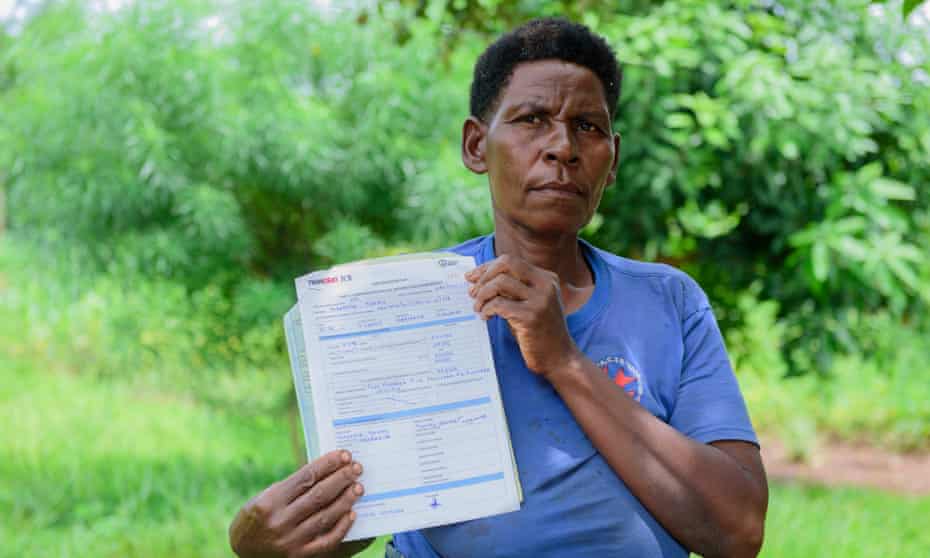
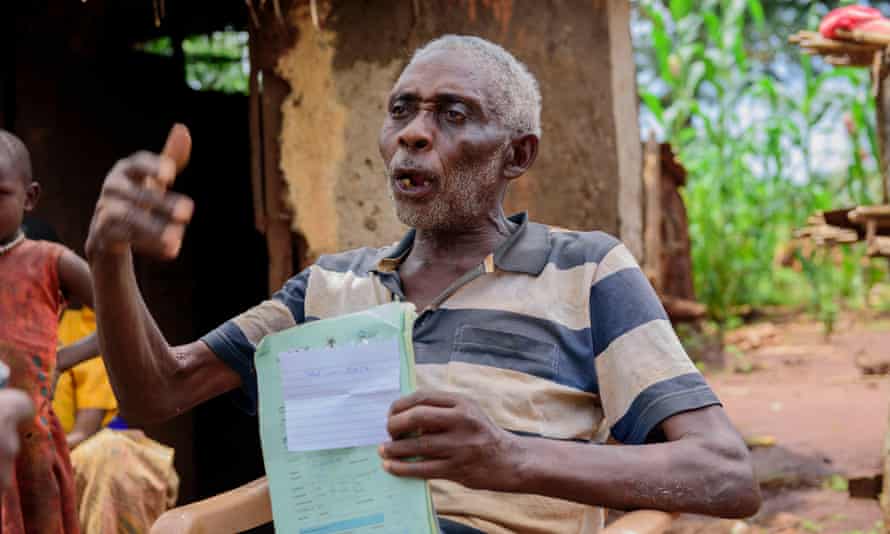
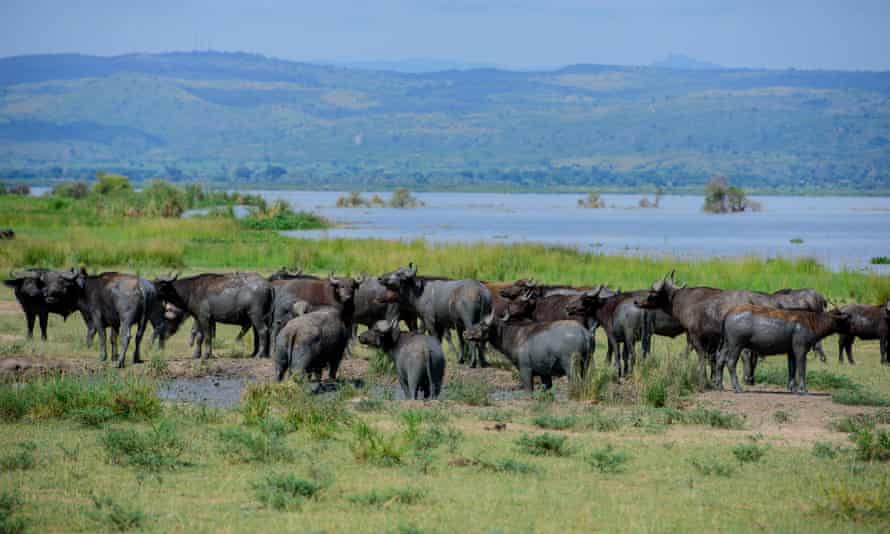

He said the National Environment Management Authority, the government agency responsible for approving the project, was “pursuing its mandate to impress oil companies and the central government without putting the interests of the country at the centre for sustainable exploitation of oil”.
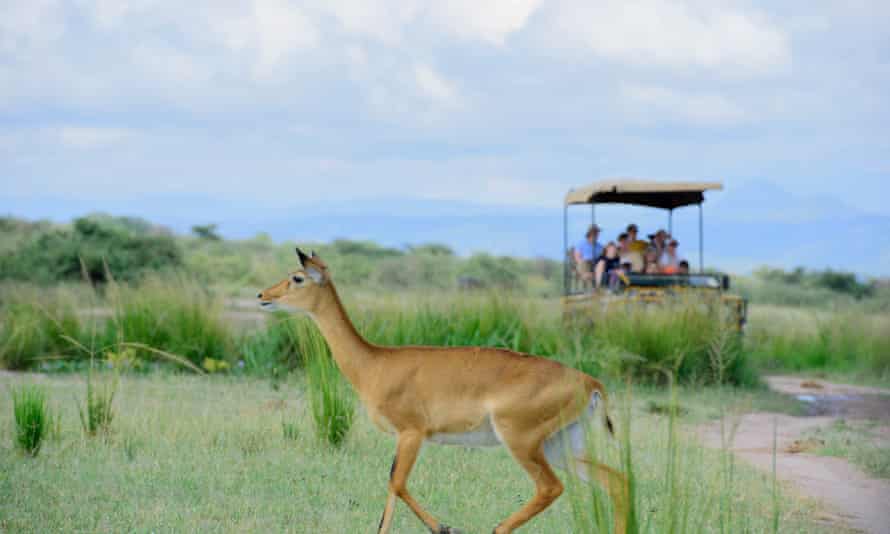
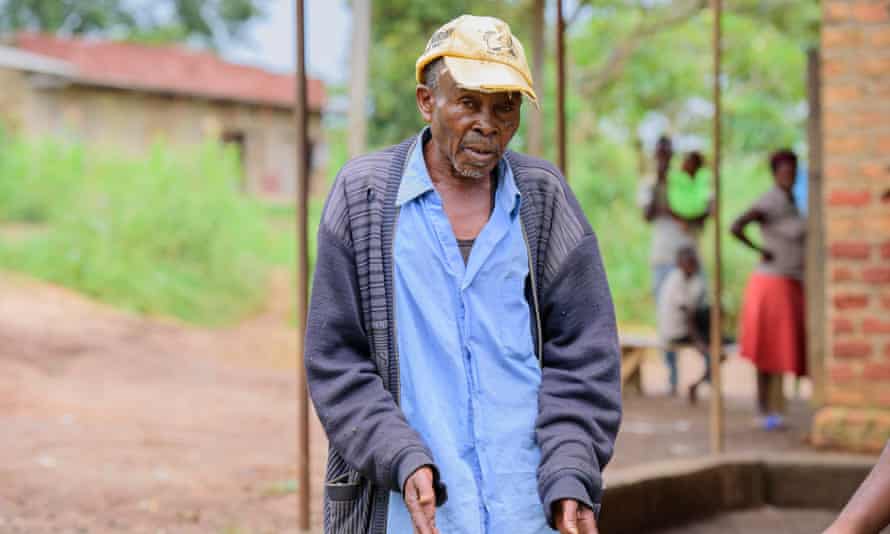

Adrin Tugume shows the documents she signed that promised her compensation, which she has yet to receive.
Photograph: Nicholas Bamulanzeki/Floodlight
Alex Tumuhimbise in Kijungu for Floodlight and Internews’ Earth Journalism Network
Sun 7 Nov 2021
Alex Tumuhimbise in Kijungu for Floodlight and Internews’ Earth Journalism Network
Sun 7 Nov 2021
LONG READ
A bumpy, mud-spattered road leads deep into Kakumiro district in western Uganda, where the longest heated oil pipeline in the world will pass through its homes, farms and wetlands.
The villagers in the Kijungu settlements welcomed the project when the route was announced in 2017, hoping that the government and companies involved would buy their land and change their lives for good. Their optimism has since given way to frustration.
Adrin Tugume, 53, depends on her land to feed her 10 children and sell bananas, cassava, beans and maize. Although construction is not yet under way, she has been asked to stay off the portion of land where the pipeline will be built.
“I was stopped from using my land for three years. It is where we get food for our children. My land had several crops, trees and herbal medicines, which I use to treat people locally,” she said. “I am not happy at all. I wish they could get another route for this pipeline and leave our land. We are only going to suffer instead of gaining and getting our lives changed.”
Local residents say they have been offered a pittance for their properties, and their compensation has not yet materialised.
Edison Basheija, 73, has vowed never to accept the 39,715 Ugandan shillings (£8.30) he was offered for his land. “I have two wives and several children and grandchildren. Our survival depends on land,” he said.
A bumpy, mud-spattered road leads deep into Kakumiro district in western Uganda, where the longest heated oil pipeline in the world will pass through its homes, farms and wetlands.
The villagers in the Kijungu settlements welcomed the project when the route was announced in 2017, hoping that the government and companies involved would buy their land and change their lives for good. Their optimism has since given way to frustration.
Adrin Tugume, 53, depends on her land to feed her 10 children and sell bananas, cassava, beans and maize. Although construction is not yet under way, she has been asked to stay off the portion of land where the pipeline will be built.
“I was stopped from using my land for three years. It is where we get food for our children. My land had several crops, trees and herbal medicines, which I use to treat people locally,” she said. “I am not happy at all. I wish they could get another route for this pipeline and leave our land. We are only going to suffer instead of gaining and getting our lives changed.”
Local residents say they have been offered a pittance for their properties, and their compensation has not yet materialised.
Edison Basheija, 73, has vowed never to accept the 39,715 Ugandan shillings (£8.30) he was offered for his land. “I have two wives and several children and grandchildren. Our survival depends on land,” he said.

Edison Basheija shows documents he signed allowing the east African crude oil pipeline to pass through his land.
Photograph: Nicholas Bamulanzeki/Floodlight
Local activists fighting the project have been arrested and detained in recent months, and they say they are the target of intentional intimidation by the government. Ugandan authorities claim the group is violating registration laws for non-governmental organisations.
The opposition to the project is not just about humanitarian concerns. The east African crude oil pipeline (EACOP) will transport oil 900 miles (1,450km) from the shores of Lake Albert on the border between Uganda and the Democratic Republic of the Congo through Tanzania to the port of Tanga on the Indian Ocean. In April, Uganda and Tanzania signed agreements with the French oil and gas company Total and the China National Offshore Oil Corporation (CNOOC).
The pipeline will pass through the habitats of at-risk species. It could jeopardise community water sources and pollute the air, and its construction will be intrusive and noisy. In Shinyanga in Tanzania, local government authorities have admitted that environmental disturbance is inevitable.
The $20bn (£14.8bn) project – forecast to deliver 1.7bn barrels of crude oil starting in 2024 or 2025 – comes as world leaders are aiming to divest from fossil fuels. The pipeline will contribute to the climate crisis, locking in more oil use and planet-heating emissions for decades to come.
Total did not respond to a request for comment, while CNOOC’s spokesperson said it was committed to avoiding environmental damage.
Local activists fighting the project have been arrested and detained in recent months, and they say they are the target of intentional intimidation by the government. Ugandan authorities claim the group is violating registration laws for non-governmental organisations.
The opposition to the project is not just about humanitarian concerns. The east African crude oil pipeline (EACOP) will transport oil 900 miles (1,450km) from the shores of Lake Albert on the border between Uganda and the Democratic Republic of the Congo through Tanzania to the port of Tanga on the Indian Ocean. In April, Uganda and Tanzania signed agreements with the French oil and gas company Total and the China National Offshore Oil Corporation (CNOOC).
The pipeline will pass through the habitats of at-risk species. It could jeopardise community water sources and pollute the air, and its construction will be intrusive and noisy. In Shinyanga in Tanzania, local government authorities have admitted that environmental disturbance is inevitable.
The $20bn (£14.8bn) project – forecast to deliver 1.7bn barrels of crude oil starting in 2024 or 2025 – comes as world leaders are aiming to divest from fossil fuels. The pipeline will contribute to the climate crisis, locking in more oil use and planet-heating emissions for decades to come.
Total did not respond to a request for comment, while CNOOC’s spokesperson said it was committed to avoiding environmental damage.

Buffalo gather around the a wetland site in Murchison Falls national park in Uganda. Photograph: Nicholas Bamulanzeki/Floodlight
In the Murchison Falls national park in Uganda, heavy trucks and road construction machinery are generating noise and appear to be fighting for space with animals. The Ugandan government has argued that the paved routes will attract tourism, but environmental activists view the asphalt roads as a means to make oil extraction easier.
Total is planning to drill more than 400 oil wells at its Tilenga project, which is inside the ecologically fragile national park. CNOOC will develop its Kingfisher project with 31 wells, about 90 miles to the south. Pipelines from the two sites will merge at Kasenyi, where oil will be processed and separated from other fluids. Then it will be pumped across the Albertine Rift valley to begin its journey to a port in Tanzania. Along the way, the pipeline will cross the basin of Lake Victoria, Africa’s largest lake, which is an essential watershed for more than 40 million people in the region and feeds into the Nile.
The pipeline will be buried up to two metres underground, will be 61cm wide and heated to 50C, so that the crude oil does not solidify, according to the project managers. Above ground, a corridor 30 metres wide would be cleared of all structures, trees and shrubland.
The pipeline would skirt the Murchison Falls’ Ramsar site, a wetland designated as being of international importance that is home to a diverse species of birds, including critically endangered shoebill storks. The drilling could also harm the Ugandan species of Rothschild’s giraffes, giant pangolins, spotted hyenas and white-headed vultures, all of which are on the IUCN’s red list of threatened species. Other animals affected may include lions, chimpanzees, buffalos, hippos, hartebeests, waterbucks, warthogs, oribis, Uganda kobs and grey duikers.
In Tanzania, too, an environmental impact statement prepared for the companies noted that vulnerable or endangered species had been found in the pipeline’s path, including elephants, hippos and lions.
In the Murchison Falls national park in Uganda, heavy trucks and road construction machinery are generating noise and appear to be fighting for space with animals. The Ugandan government has argued that the paved routes will attract tourism, but environmental activists view the asphalt roads as a means to make oil extraction easier.
Total is planning to drill more than 400 oil wells at its Tilenga project, which is inside the ecologically fragile national park. CNOOC will develop its Kingfisher project with 31 wells, about 90 miles to the south. Pipelines from the two sites will merge at Kasenyi, where oil will be processed and separated from other fluids. Then it will be pumped across the Albertine Rift valley to begin its journey to a port in Tanzania. Along the way, the pipeline will cross the basin of Lake Victoria, Africa’s largest lake, which is an essential watershed for more than 40 million people in the region and feeds into the Nile.
The pipeline will be buried up to two metres underground, will be 61cm wide and heated to 50C, so that the crude oil does not solidify, according to the project managers. Above ground, a corridor 30 metres wide would be cleared of all structures, trees and shrubland.
The pipeline would skirt the Murchison Falls’ Ramsar site, a wetland designated as being of international importance that is home to a diverse species of birds, including critically endangered shoebill storks. The drilling could also harm the Ugandan species of Rothschild’s giraffes, giant pangolins, spotted hyenas and white-headed vultures, all of which are on the IUCN’s red list of threatened species. Other animals affected may include lions, chimpanzees, buffalos, hippos, hartebeests, waterbucks, warthogs, oribis, Uganda kobs and grey duikers.
In Tanzania, too, an environmental impact statement prepared for the companies noted that vulnerable or endangered species had been found in the pipeline’s path, including elephants, hippos and lions.

Elephants in Murchison Falls national park in Uganda, where the Nile River meets Lake Albert.
Photograph: Nicholas Bamulanzeki/Floodlight
Activists and hundreds of local and international civil society organisations in April launched a campaign called #StopEACOP, condemning the oil extraction and pipeline for its threats to endangered species in the park and other conservation areas. They also asked international banks and other financial institutions to stop financing the projects.
Gloria Sebikari, a spokesperson for the Petroleum Authority of Uganda (PAU), said a number of biological baseline surveys were being undertaken in an effort to understand the “behaviour, ranging patterns and habitat utilisation” of involved species.
“The information from the studies is being used in designing appropriate mitigation measures for the impacts of oil and gas activities on biodiversity, monitoring wildlife population dynamics, and also in the preparation of species-specific management plans,” she said.
The PAU maintains that the oil companies have secured all the necessary environmental and social impact approvals to move forward with the project.
While addressing local leaders in Kakumiro district in October 2021, Zakalia Lubega, a corporate affairs manager for CNOOC, said the company had “developed environment, social, monitoring and management plans” that were “going to be our bible during the project development”. He said the plans would make sure the “relevant mitigation measures” were in place.
Local advocates, though, say the government is not requiring any protections for the drilling, processing sites or pipeline.
A 2020 report by Oxfam that surveyed communities along the path of the pipeline found they feared it could “burst and explode, causing property damage, injuries and major disruption of the aquatic life of [Lake Victoria]”. “A spill would not only affect Uganda but rather become a transboundary issue affecting all the east African states,” the report noted.
The environmental and social impact assessment reports also failed to include mitigation agreements in case of oil spills, and had no detailed plan on combating climate change, said Brian Nahamya, a programme associate at Global Rights Alert, an
Activists and hundreds of local and international civil society organisations in April launched a campaign called #StopEACOP, condemning the oil extraction and pipeline for its threats to endangered species in the park and other conservation areas. They also asked international banks and other financial institutions to stop financing the projects.
Gloria Sebikari, a spokesperson for the Petroleum Authority of Uganda (PAU), said a number of biological baseline surveys were being undertaken in an effort to understand the “behaviour, ranging patterns and habitat utilisation” of involved species.
“The information from the studies is being used in designing appropriate mitigation measures for the impacts of oil and gas activities on biodiversity, monitoring wildlife population dynamics, and also in the preparation of species-specific management plans,” she said.
The PAU maintains that the oil companies have secured all the necessary environmental and social impact approvals to move forward with the project.
While addressing local leaders in Kakumiro district in October 2021, Zakalia Lubega, a corporate affairs manager for CNOOC, said the company had “developed environment, social, monitoring and management plans” that were “going to be our bible during the project development”. He said the plans would make sure the “relevant mitigation measures” were in place.
Local advocates, though, say the government is not requiring any protections for the drilling, processing sites or pipeline.
A 2020 report by Oxfam that surveyed communities along the path of the pipeline found they feared it could “burst and explode, causing property damage, injuries and major disruption of the aquatic life of [Lake Victoria]”. “A spill would not only affect Uganda but rather become a transboundary issue affecting all the east African states,” the report noted.
The environmental and social impact assessment reports also failed to include mitigation agreements in case of oil spills, and had no detailed plan on combating climate change, said Brian Nahamya, a programme associate at Global Rights Alert, an
He said the National Environment Management Authority, the government agency responsible for approving the project, was “pursuing its mandate to impress oil companies and the central government without putting the interests of the country at the centre for sustainable exploitation of oil”.

Tourists admire a kob in the Murchison Falls national park.
Photograph: Nicholas Bamulanzeki/Floodlight
The pipeline project is in direct conflict with the recommendation by the International Energy Agency that there must be no new fossil fuel development if global heating is to be limited to 1.5C.
The #StopEACOP campaigners estimate that the pipeline would lead to more than 34m tonnes of CO2 each year, exacerbating the global climate emergency. That is equivalent to the emissions from nearly 7m passenger vehicles driven for a year.
The pipeline’s developers are not unaware of these impacts. A recent study claimed Total was aware of evidence about the climate consequences of burning fossil fuels as early as 1971. In a statement to the Agence France-Presse, a spokesperson said the company “openly acknowledged the findings of climate science 25 years ago”, as well as “the link with the petroleum industry”.
This year, Total renamed itself TotalEnergies and announced new clean energy goals, in a climate branding push that campaigners say belies the company’s investment in EACOP. Meanwhile, China recently announced that it would not build new coal plants abroad, but it is continuing to invest in Uganda’s CNOOC.
Several local non-governmental organisations launched a lawsuit against the project, alleging that it poses imminent dangers to the climate, environment, biodiversity and human rights.
Onesmus Mugyenyi, deputy executive director of Advocates Coalition for Development and Environment, based in Kampala, argued that some of the money going into the new oil projects should go to clean energy.
Uganda’s investment in renewable energy has so far been limited. According to a June 2020 report by International Growth Centre, a UK research centre, solar power accounts for 4% of Uganda’s energy production, just 1% of the country’s 2040 goals.
According to the project resettlement action plan prepared for Uganda by the government and EACOP partners, almost 4,000 people will be affected by the pipeline. It will cut through 219 residential dwellings and 1,157 additional structures. including grain stores, livestock enclosures and outhouses. In Tanzania, more than 2,000 will be directly affected.
And there is still frustration at the delay of payment to those who sold their land. Local activists have condemned the government’s failure to address the delayed compensation.
Under Uganda’s guidelines, people affected by the pipeline should be resettled or compensated with cash based on what they will have to spend to replace their land.
The pipeline project is in direct conflict with the recommendation by the International Energy Agency that there must be no new fossil fuel development if global heating is to be limited to 1.5C.
The #StopEACOP campaigners estimate that the pipeline would lead to more than 34m tonnes of CO2 each year, exacerbating the global climate emergency. That is equivalent to the emissions from nearly 7m passenger vehicles driven for a year.
The pipeline’s developers are not unaware of these impacts. A recent study claimed Total was aware of evidence about the climate consequences of burning fossil fuels as early as 1971. In a statement to the Agence France-Presse, a spokesperson said the company “openly acknowledged the findings of climate science 25 years ago”, as well as “the link with the petroleum industry”.
This year, Total renamed itself TotalEnergies and announced new clean energy goals, in a climate branding push that campaigners say belies the company’s investment in EACOP. Meanwhile, China recently announced that it would not build new coal plants abroad, but it is continuing to invest in Uganda’s CNOOC.
Several local non-governmental organisations launched a lawsuit against the project, alleging that it poses imminent dangers to the climate, environment, biodiversity and human rights.
Onesmus Mugyenyi, deputy executive director of Advocates Coalition for Development and Environment, based in Kampala, argued that some of the money going into the new oil projects should go to clean energy.
Uganda’s investment in renewable energy has so far been limited. According to a June 2020 report by International Growth Centre, a UK research centre, solar power accounts for 4% of Uganda’s energy production, just 1% of the country’s 2040 goals.
According to the project resettlement action plan prepared for Uganda by the government and EACOP partners, almost 4,000 people will be affected by the pipeline. It will cut through 219 residential dwellings and 1,157 additional structures. including grain stores, livestock enclosures and outhouses. In Tanzania, more than 2,000 will be directly affected.
And there is still frustration at the delay of payment to those who sold their land. Local activists have condemned the government’s failure to address the delayed compensation.
Under Uganda’s guidelines, people affected by the pipeline should be resettled or compensated with cash based on what they will have to spend to replace their land.

Geresemu Busingye has been waiting several years for compensation for his land. Photograph: Nicholas Bamulanzeki/Floodlight
Geresome Busingye, an elder of a village in the Kijungu settlements, said he had exhausted his appeals in the land valuation process and that he was praying that the president would intervene. “I welcomed the government’s project because I have no power to stop it,” he said. “I am not happy because my land and crops were undervalued. I no longer have the energy to move to different offices to seek help. I signed the compensation disclosure forms because I have no other alternative.”
Nahamya said the compensation delays violate property ownership rights and “go against best international standards and practices for land acquisition and resettlement … There are a number of environmental and human rights issues that remain unresolved.”
Those behind the EACOP have acknowledged that the project presents “many challenges”. Fred Bazarabusa, the land and community engagement officer, told local leaders in Kakumiro: “We have realised that there are many challenges in this project and the failure to pay the affected people will pile [on] more challenges.”
The project plans to pay those impacted an additional 15% for each year their payment has been delayed since 2018, he said.
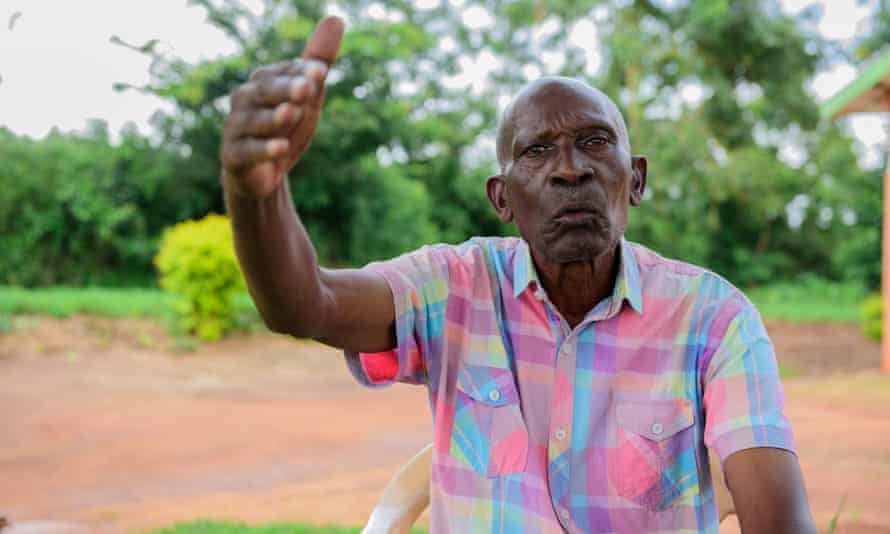
Geresome Busingye, an elder of a village in the Kijungu settlements, said he had exhausted his appeals in the land valuation process and that he was praying that the president would intervene. “I welcomed the government’s project because I have no power to stop it,” he said. “I am not happy because my land and crops were undervalued. I no longer have the energy to move to different offices to seek help. I signed the compensation disclosure forms because I have no other alternative.”
Nahamya said the compensation delays violate property ownership rights and “go against best international standards and practices for land acquisition and resettlement … There are a number of environmental and human rights issues that remain unresolved.”
Those behind the EACOP have acknowledged that the project presents “many challenges”. Fred Bazarabusa, the land and community engagement officer, told local leaders in Kakumiro: “We have realised that there are many challenges in this project and the failure to pay the affected people will pile [on] more challenges.”
The project plans to pay those impacted an additional 15% for each year their payment has been delayed since 2018, he said.

Ezra Twinomujjuni, the leader of an informal group of pipeline-affected residents in Kakumiro.
Photograph: Nicholas Bamulanzeki/Floodlight
But local frustration over the project is not just about money. For many, this upheaval is not an entirely new experience. Some in Kakumiro were resettled there in 1992, when their lands were acquired to create the Mpokya forest reserve. The oil project has now plunged communities into land conflicts, as wealthy individuals have shown up to claim properties that people have been living on for decades.
“Before the pipeline project was announced, we were living peacefully,” said Ezra Twinomujjuni, the leader of an informal group of pipeline-affected residents in Kakumiro. “If our issues are not worked on, I will mobilise my people and we will reject the project.”
Emily Holden contributed to this story
But local frustration over the project is not just about money. For many, this upheaval is not an entirely new experience. Some in Kakumiro were resettled there in 1992, when their lands were acquired to create the Mpokya forest reserve. The oil project has now plunged communities into land conflicts, as wealthy individuals have shown up to claim properties that people have been living on for decades.
“Before the pipeline project was announced, we were living peacefully,” said Ezra Twinomujjuni, the leader of an informal group of pipeline-affected residents in Kakumiro. “If our issues are not worked on, I will mobilise my people and we will reject the project.”
Emily Holden contributed to this story
No comments:
Post a Comment